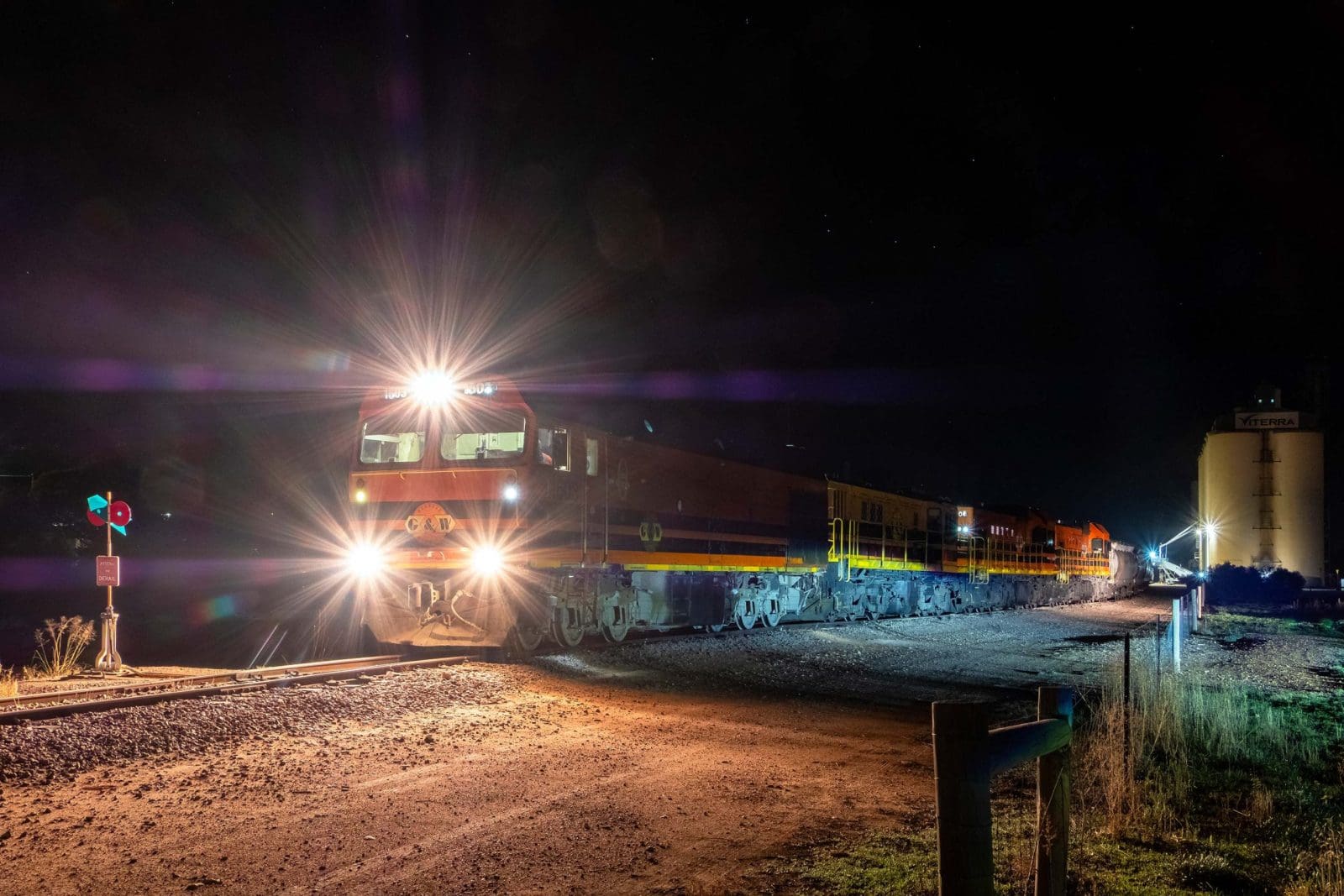
The last train out Viterra’s Wudinna siding loads grain in 2019. Photo: John Kirk Photography
AURIZON and Viterra are progressing plans in South Australia for the $240-million Eyre Peninsula rail, ensuring they are ready to commence work as soon as Federal Government funding is approved.
Work done in anticipation of a funding announcement means the project could be up and running within 18-24 months.
Rail operator Aurizon and SA’s dominant bulk handler Viterra are prioritising using SA contractors and suppliers for upgrades to the line which was mothballed in 2019, when Viterra’s decision to not renew its agreement with rail operator Genesee & Wyoming Australia came into effect.
The project has the potential to create a significant order of SA-made steel for replacement railway line.
In 2023, Aurizon and Viterra applied to the Federal Government for funding to support the project, which includes upgrading the currently closed 67km of narrow-gauge line from Port Lincoln to Cummins, and north through Lock to Kimba, as well as north-north-east to Wudinna.
Viterra plans to carry out significant infrastructure upgrades at its sites to facilitate the reintroduction of rail.
This includes fast-rail outloading infrastructure at its Lock, Wudinna, Cummins, Kimba and Rudall sites to maximise the efficiency of using rail, and fast inloading infrastructure at the Port Lincoln terminal to reduce turnaround times for rail, increasing volume capabilities.
Company representatives have been meeting with councils across EP to discuss planning and ensure a safe and efficient return to rail services in the region.
Viterra chief executive officer ANZ Philip Hughes said feedback from discussions with councils has been positive, and highlights strong local support.
“We appreciate their constructive input and engagement as we take steps to make rail transport a reality once again for the EP and bring the wide range of benefits to their communities,” Mr Hughes said.
City of Port Lincoln Mayor Diana Mislov said local councils were calling on government to prioritise the proposed plan.
“We believe there is an incredibly strong case for the government to prioritise this project, given the wide range of benefits it would provide for a number of stakeholders,” Ms Mislov said.
“We are particularly passionate about the reduction of truck movements to reduce congestion on our busy roads.
“As a tourist-centric area, less trucks on our roads, particularly during our busiest months, would benefit all of the EP.
“Similar projects the Federal Government has co-funded in Western Australia, New South Wales and Victoria have provided significant benefits to local communities and growers and exporters, and we feel our state deserves similar support.”
As the May 3 federal election nears, Anita Kuss, independent candidate for Grey, which covers EP, has said she will push for federal funding for the project, which she understands already has commitment from the SA Government as well as Aurizon and Viterra.
Ms Kuss acknowledged loss of freight rail in 2019 resulted in farmers finding other solutions to deliver their grain.
“While some farmers will continue to opt for road transport to alternative grain handlers and markets, having choice is valuable,” MS Kuss said.
Aurizon’s Adelaide-based general manager bulk central Matt Jones said reintroducing rail with an upgraded track will significantly increase the efficiency of the entire EP transport network.
“Rail also provides safety, community and environmental benefits,” Mr Jones said.
“With the commitment from Viterra to utilise the line for local grain movements, this project will provide a significant reduction in CO2-e emissions of approximately 20,000 tonnes a year, and 40,000 plus less truck movements between upcountry and Port Lincoln.”
“It’s great to be able to continue working with the State and Federal Governments and Viterra on a project that will generate substantial long-term economic, social, and environmental benefits.”
Mr Hughes said a return to rail on EP would support improved efficiency and supply chain resilience and the ability to export more tonnes earlier in the season, making it an important project for the South Australian grain industry.
“It will also reduce freight rates by up to 25 percent, which is a saving we pass back to growers.”
The reintroduction of rail is expected to allow an extra 120,000t, or two Panamax vessels, per month, to load at Viterra’s Port Lincoln.
Outside Port Adelaide terminals, this would once again make Port Lincoln the only regional bulk terminal with a rail connection.
Source: Viterra

HAVE YOUR SAY